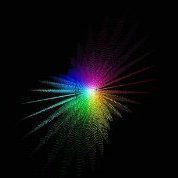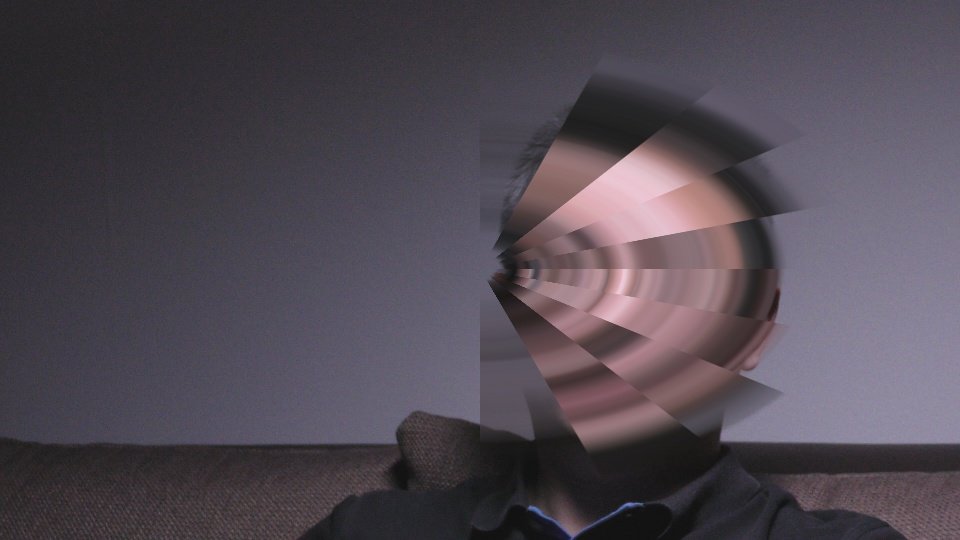-
Posts
33 -
Joined
-
Last visited
Profile Information
-
Occupation
Cinematographer
-
Location
Frankfurt
Recent Profile Visitors
1,743 profile views
-
Jingtian Wang started following Joshua Linder
-

Director’s viewfinder, need advice
Jingtian Wang replied to Andreas Haglund's topic in General Discussion
Micro 4/3 is a camera sensor size, it's smaller than super 35 you mentioned. It's used mostly by mirrorless cameras that have a focus on video. I believe the reason that this is the case is because the smaller sensor is easier to cool. Thus they can fit more processing hardware in the body and thus deliver a better codec. It appears that they are mostly used by panasonic, olympus and maybe fujifilm (correct me if I'm wrong). But to make matters more confusing, micro 4/3 also refers to a lense mount. For the micro 4/3 sensor, thus you'll hear both micro 4/3 camera and lense. The advantages to micro 4/3 lens is the fact that it allows other tradition lens mount lens to be adapted to it, and that it allows for some really innovative designs (i.e anamorphic lens for micro 4/3 can cost a fraction the price as for a more traditional mount). -
I'm not sure if this will still be relevant to you, after all it's 6 years later :D. But if it still helps, I've rented from their Frankfurt branch. Great people and great equipment. In fact, they seems to run a equipment cycling model, where they often sell equipment that are rather new by rental house standards to make space for new ones. They are a legit business and I wouldn't worry about buying from them. But seems like you're based in the states, and Pille is based in Germany, might want to figure out shipping. Best, J.
-
In my opinion, I think if your goal is to become a DP, you shouldn't do much 1st AC, a straight jump from 2nd AC to DP is much more logical. Focus pulling is an art itself which has little to do with the DPs job. 1st AC tend to also be a lot more busy compared to 2nd AC, which means less time to learn what's going on. But I've seen it both ways so not the one to judge. My approach to owning cameras is similar to Canon/Nikon's approach to kit lens. Where if producer really don't have the budget, we can shoot something. This helps me capture some portion of the projects that need gear and get these experience. But ultimately I want to hired for who I am, not what my camera is.
-
Based on what you said, I suppose you are referring to super 35 sensors. To that, I don't think s35 is the best anymore. Back in the film days, s35 film were used because it's a good balance between price and image. However, in digital, VV and 65mm cameras are becoming much more common. I used be loyal to s35 myself few years back, but after watching few pictures shot on larger format, I totally changed my mind. Alexa 65 or even LF shots is just at another level. But to answer your question, the only reason I could think of to choose s35 is for lens compatibility, as most older (pre 2010) lens are designed to fit s35, so if you want to shoot on certain older lenses, you need to go s35. But even then, a lot of older lenses do cover LF or even 65mm even if spec sheet says otherwise. I remember thinking larger formats has no place when they were first released, because the lack of good lenses, but now days, some of the best lenses cover larger formats.
-

Kino Flo Heavy Magenta Tint
Jingtian Wang replied to Jingtian Wang's topic in Lighting for Film & Video
That shouldn't be the cause as dimming wasn't even a option on the units I had (2x2 and 2x1 with separated ballast) This sounds like the most plausible. The tubes had 2015 on there as their manufacture date. Not sure if this is considered old for Kino tubes? -

Kino Flo Heavy Magenta Tint
Jingtian Wang replied to Jingtian Wang's topic in Lighting for Film & Video
This is what I thought, and why this surprised me so much. I later realised it might be caused by bad black balance. So I re-balanced that took this shot. But same thing. This seems to only appear on the daylight bulbs and the tungsten seems fine to me. -

Kino Flo Heavy Magenta Tint
Jingtian Wang replied to Jingtian Wang's topic in Lighting for Film & Video
These were 242-k55 tubes.So the 2 pin version, unless I remember wrong, these were the original kinos tubes. -
While looking back at still grabs of today's shoot. I found shots to have a heavy magenta tint. This is very obvious in the first shot, and more subtle in the second. The shot is lit by a 1x2 kino and a 2x2 kino, both with k55 bulbs. I rented the light from a reputable rental house and the chances of anything being a knock off is very low; the fixtures and bulbs seemed fairly new to me but I can't tell for sure. The camera is white balanced correctly and rooms lights are turned off. The camera I used is a Panasonic Hcx 1000e. One potential cause might be my laptop screen as the shots seemed normal ona small HD 502 (I was told it is new, no idea whether calibrated), but it can also be the other way around. And I also wasn't most focused on the colors during this shots Any inputs is appreciated. J p.s faces were blurred for obvious reason.
-
Personally never had to budget or crew to go for one of these pieces. But from the numerous rental house visits I've had, it's clear the higher end house stock mainly Arri equipment and mid to lower tier ones stock third party. I suppose (but not 100% sure) this is because DPs on high end productions have more budget and less time, so they are willing to pay for the Arri to ensure quality and save time in prep. Where as mid - low end jobs have smaller budget so the DP needs to get smarter, and third party equipment is often just as good but some research needed for compatibility. And far as I know, almost all shows now days uses Teradek as their wireless video with very few exceptions on very high end using Arri. It can be argued that Teradek is just as good if not better than Arri. Demand for Teradek should be pretty high, as many DP would book them even on lower end jobs to impress clients. You didn't post much else on what you already have and the market you are in, so it's hard to recommend beyond what you've asked. But if you've been renting out for a while, you should look into the record of what's popular and pay attention to what clients request the most. And make a informed decision form that. The rental market is tricky now days and hats-off to you for taking the risk.
-

Wide Angle Vs Telephoto, Your Prefrence
Jingtian Wang replied to Jingtian Wang's topic in General Discussion
That's a fair point and all, but what if you can literally create any set, subject and story as you wish (ignore all limits of physics); imagine you are getting the shot for your reel and your reel only. Like on "Dream Job, Massive Budget, would you Shoot Film or Digital". Would you prefer a wide or tide shot? -
Title says it all; do you prefer a wider or tider lens? And why? Imagine a clean a slate, you have total creative freedom and no need to "suit the scene". Make it interesting.
-

Family documentary: What to Purchase first
Jingtian Wang replied to Travis McNeill's topic in General Discussion
By my understanding, you are making a one-off, non-commercial, just for fun production right? If this is the case I don't really advice you to go any buy any of the stuff you mentioned. It would be a few thousand dollars, and unless you are making money off of it, it's not worth it. In this case I would recommend you simply go ahead and rent, it might seem like spending few hundred per day is expensive, but it's actually very affordable for the quality you are getting. You can rent on weekends and only pay for one day, or rent for whole weeks and paying for 3 day/week. I don't really know where to go as I live in Europe, manye someone based in states can help. Bt in any case, 1080p is more than enough , and 60p is nice for some slow-mo. Wouldn't recommend get anything more than that. If you do plan to shoot for many days (for more than 10 days) or plan to do multiple projects in future, then I would recommend you look into a company called Aputure for lights, their lights are very high quality and affordable (they are also coming out with a full RGB panel mid 2020). And stay away from Tungstens, they are old tech and suck a ton of power, it's easy to trip a breaker with them unless you know what you are doing. One exception is to buy used tungsten from rental houses, they're moving onto LEDs and are selling off their old Tungstens for pennies (like a 650w for $100), tungstens are built like tanks so age doesn't matter. One thing I would recommend you to buy is a good on camera monitor, it's the only thing many DPs own now days, as you can always rely on your monitor. You generally learn your monitor better with time and it really speeds up your workflow. Something like the small HD 702 or focus 5. You can find used ones for cheaper, but their prices have came down a lot now days. One last tip is to go a talk to your local camera rental houses, they can offer you deals on used gear. Finding a good one can go a long way when it come to renting.They also can teach you how to pick out a kit - lesson that are way too long for a forum post. They are is most cases very friendly, even if you don't seem high value to them - find a new one right away if they hostile to you because you aren't high value. Anyways, welcome to the forum and feel free to post any questions you have. But always search if it has been posted before you ask. Many questions have already been answered. Here's a few links that might help: -
You do have to consider that SLRs back then shoots film, so they generally have much less exposures on them due to the much higher per shot cost. I suppose most SLRs from back in the days don't have that many exposures on it, since even something like 5000 exposures would mean 140 rolls of 36 frame film, suppose very few shoots that many. Whereas today digital means many DSLRs are going through way more, and they certainly do fail. There's even a website for people to check how many exposures a given model's shutter might last (shuttercheck.app). But I digress.





